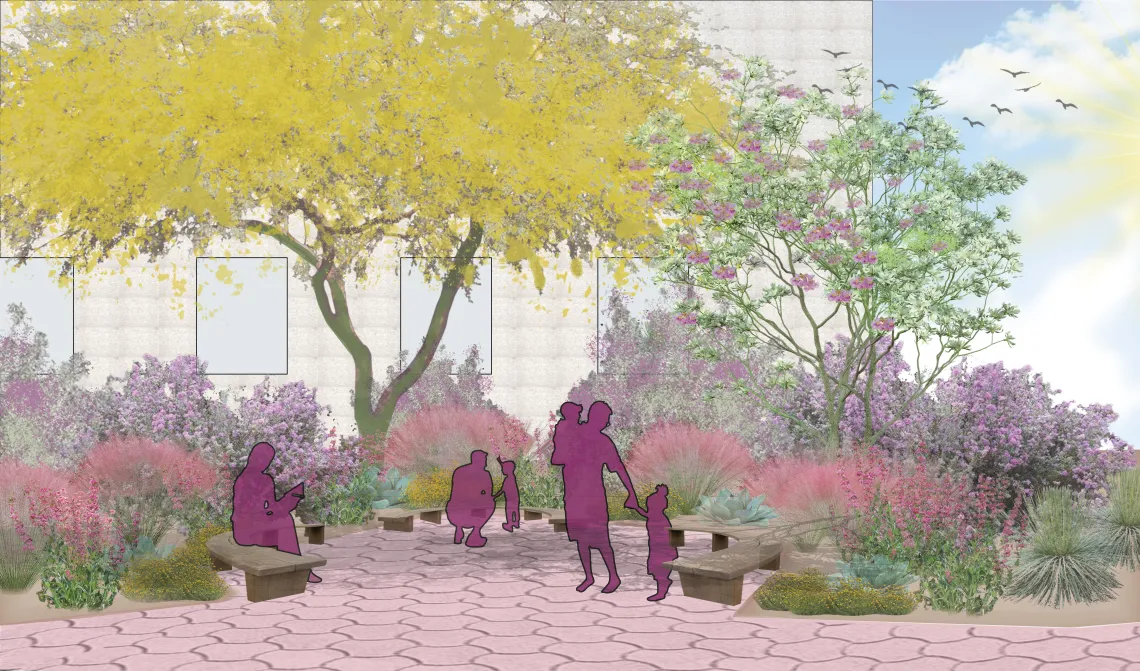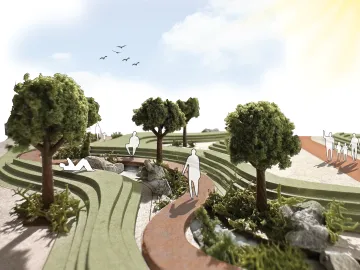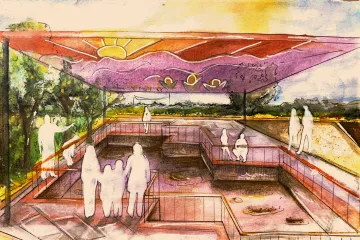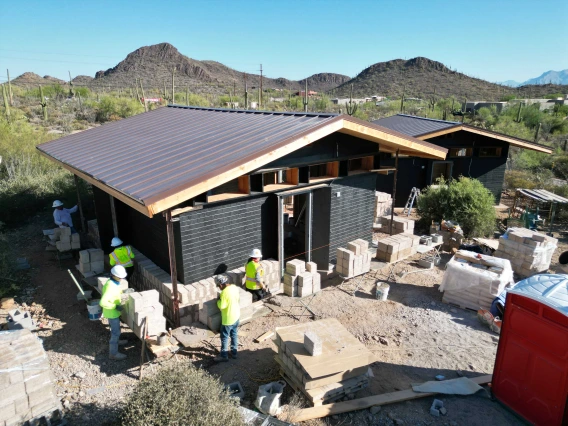Class of 2024 | Paving Your Own Way

Perspective render from a project called Fluid Healing. It is a therapeutic hospital garden for staff, visitors and patients. Emma Hughes focused on using plant materials to create a sense of enclosure, cooling and healing.
The College of Architecture, Planning and Landscape Architecture celebrated its first graduating class of the Bachelor of Landscape Architecture program during the Spring 2024 Convocation Ceremony.
We speak with a few of the graduating students about their experience and their goals for the future.
Emma Hughes came to CAPLA from Phoenix and found the BLA program amidst the COVID-19 pandemic. Hear about her CAPLA experience as part of the first BLA graduating class this May.
“I felt very supported by the amazing professors that pushed me to be the best possible designer I could be.”
Q: Why did you choose the BLA program?
A: I chose the BLA program because I knew I always wanted to pursue a creative field. I was originally an art major, but then COVID hit and I was back home after a dorm evacuation. I had some time to consider my future and was surfing the majors that UArizona offered.
None of them felt right until I found landscape architecture. I was amazed that there was an architecture job that focused on plants and the natural world. I had never heard of this profession before. I was nervous to be joining a brand-new program, but all those fears were put to rest after meeting with a CAPLA advisor. I changed my major that day.
Q: How would you describe your BLA experience?
A: I would describe my experience as a roller coaster, but in a good way. My first year, we were all on Zoom. There was always an unknown about what CAPLA was like and what studio culture was like. Once I was able to finally be in the studio, it made everything so much easier. You get to have a genuine connection with your peers and professors when you're in person.
I think the biggest hurdle I had was feeling like a guinea pig. Of course, being in the first BLA class had something to do with that. Still, it was stressful when there were no upper-class students in my degree to learn from. However, the MLA program is an established program, and we all took the same classes together, so we all got to struggle and succeed together. I felt very supported by the amazing professors that pushed me to be the best possible designer I could be.
Q: What will you always remember from your time as a BLA student?
A: I will always remember the long days in the studio (both good and bad). I'll always remember when a studio professor brought in donuts she had bought herself, just to give us on our own BLA appreciation day. I’ll also remember the variety of classes I had the privilege of taking like planting design, site engineering and history of landscape architecture. These and others gave me a great grasp of the field.
Q: What are your plans after graduation?
A: I plan to stay in Tucson and work as a design associate at a local firm called Kimley-Horn. I got a return offer after working with them as an intern last summer. It’s because of the CAPLA Job Interview Fair that I was able to get that opportunity.
Q: What advice do you have for incoming BLA students?
A: My advice is to push through those large intro classes. Being with all the architecture and landscape undergraduates is a valuable experience. You will get fully immersed in landscape architecture once you get to your specific classes and professors.
Secondly, go to the CAPLA Job Interview Fair. Seriously, I know it's super nerve racking, but I promise it’s worth it. Even if nothing comes of it, the interviewing practice will help.
Also, try your best to prioritize sleep (kind of unrealistic, I know) your mental health is the top priority. Do not take things TOO seriously, remember this is just school and you're not expected to know everything. And lastly, ask plenty of questions!
Q: What's a common misconception about landscape architecture?
A: That we throw a few trees about buildings and call it a day. Landscape architecture is about how we can successfully connect and guide people through space. How can we help bridge community ties, how can we re-connect people to the natural world around them, especially in highly dense urban cities? Can we protect our wildlife in specialized gardens or corridors?
A huge aspect of the field is sustainability. How can we create innovative ways to harvest rainwater in our arid climate to avoid massive flooding damage to our streets and instead redirect it into bioswales that need that water for the native desert plants they grow? Landscape architecture is a growing, innovative field with so many design opportunities.





